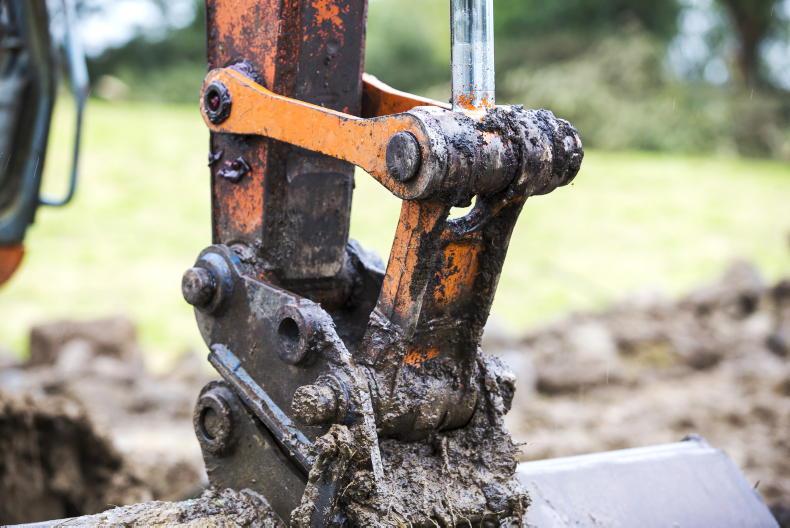Driving across the country over the last week I saw a good few farmers out doing jobs in fields such as doing drainage work and putting in new farm roadways.
With all the talk of re-wetting, drainage has become an almost dirty word in some quarters but the thing to remember is that draining mineral soils is beneficial from a carbon sequestration point of view.
It is draining peat soils that is having a negative impact on greenhouse gas emissions. Obviously, farmers in special areas of conservation or other special areas need to have permission for drainage.
What I saw around the country last week was farmers putting in drains into what looked like good grass fields, but nearly all fields look good in July.
However, after a very wet last 12 months which saw springs appear where there was never springs before, farmers are looking to tap into these with shallow drains linking to a bigger field drain.
Source of water flow
Finding the source of the spring can be a challenge. Some farmers use diviners to help them source the flow of water but getting this exactly right can be hard.
Running a mole plough across these areas will help to create another avenue for water to flow in between the drains.

Some farmers use diviners to help them source the flow of water but getting this exactly right can be hard.
Drains should be installed across a slope at 0.8 – 1.0m deep. Depending on the topography and slope, the collector drains will be at a spacing of 10–40m.
A larger spacing reduces costs but results in a much higher chance of failure. The disruption channels (mole drains) themselves are drawn at right angles to the collectors (up-slope) at spacings of 1.0-1.5 m and a depth of approximately 0.4-0.5 m.
Stone backfill for collectors should be filled to within 250mm of the surface to ensure interconnection with the disruption channels when installed afterwards.
It is not necessary to fill the stone to the surface unless there’s a hollow in the field where water is pooling.
Driving across the country over the last week I saw a good few farmers out doing jobs in fields such as doing drainage work and putting in new farm roadways.
With all the talk of re-wetting, drainage has become an almost dirty word in some quarters but the thing to remember is that draining mineral soils is beneficial from a carbon sequestration point of view.
It is draining peat soils that is having a negative impact on greenhouse gas emissions. Obviously, farmers in special areas of conservation or other special areas need to have permission for drainage.
What I saw around the country last week was farmers putting in drains into what looked like good grass fields, but nearly all fields look good in July.
However, after a very wet last 12 months which saw springs appear where there was never springs before, farmers are looking to tap into these with shallow drains linking to a bigger field drain.
Source of water flow
Finding the source of the spring can be a challenge. Some farmers use diviners to help them source the flow of water but getting this exactly right can be hard.
Running a mole plough across these areas will help to create another avenue for water to flow in between the drains.

Some farmers use diviners to help them source the flow of water but getting this exactly right can be hard.
Drains should be installed across a slope at 0.8 – 1.0m deep. Depending on the topography and slope, the collector drains will be at a spacing of 10–40m.
A larger spacing reduces costs but results in a much higher chance of failure. The disruption channels (mole drains) themselves are drawn at right angles to the collectors (up-slope) at spacings of 1.0-1.5 m and a depth of approximately 0.4-0.5 m.
Stone backfill for collectors should be filled to within 250mm of the surface to ensure interconnection with the disruption channels when installed afterwards.
It is not necessary to fill the stone to the surface unless there’s a hollow in the field where water is pooling.











SHARING OPTIONS